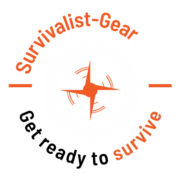Why disaster preparedness increases social resilience and what you can do to help
Disasters happen all the time. Earthquakes, hurricanes, wildfires, etc. – they can seem like they’re happening more and more frequently. What can a community do for disaster risk reduction and which disaster preparedness activities should be performed?
Emergency and disaster preparedness
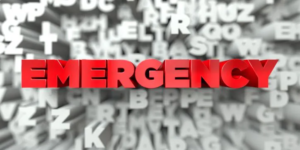
As a society, we need to be better prepared for disasters or a sudden emergency. That means having a plan in place, and being ready to act when disaster strikes. Doing this not only makes us safer as individuals and families, but it also makes our communities stronger. When everyone is working together to respond to a disaster, it builds social resilience – our ability to bounce back after a traumatic event.
With the recent events in Ukraine and a more and more uncertain future, now is the time to rethink your preparedness. Disasters can happen anytime and anywhere. Emergency preparedness is a key component of keeping you, your family members and pets safe in the event of a disaster. By taking some simple steps ahead of time, you can be sure that you are as prepared as possible for whatever emergency may come your way. There are a few key things that you can do to prepare for an emergency:
1. Create an emergency plan

One of the most important things you can do is to create an emergency plan. This should include a list of emergency contacts, a designated meeting place, and a plan for evacuating your home. Knowing what to do in the event of an earthquake, tornado, hurricane, fire, floods, blackout or other disaster can help to keep everyone safe. Knowing where to go for shelter in case of an emergency will help reduce stress and anxiety during a chaotic time. Make sure to discuss, review and agree on the plan with everyone in your household so that everyone knows what to do in an emergency situation and where to meet. Assume that communications might be down.
In this blog you’ll find relevant information to help you create a solid emergency plan.
2. Assemble an emergency survival kit or bug out bag
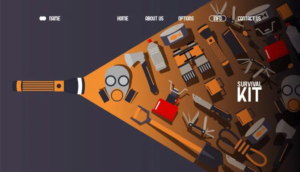
It is also important to have emergency supplies on hand. A basic emergency survival kit should include items like water, food, first aid supplies, personal documents, prescription medications and prescriptions, and a flashlight. Keep the kit in an easily accessible location so that you can grab it and go if you need to evacuate. replenish the supplies as needed so that they are always fresh.
We have done extensive research so you can assemble the proper survival kit for yourself with as little research time. Our shop contains a collection of quality products you can choose from.
3. Murphy’s law: Expect the unexpected

Having contingency plans for power outages, longer blackouts, downed communications, closed or unpassable roads will minimize the disruption. Emergency services and first responders might be overwhelmed or unavailable and evacuation routes blocked. Expect the unexpected and have a contingency plan ready as a backup. Do not rely solely on your official government organization and emergency management to come assist you.
In this blog we’ll cover first the most likely scenarios to get you prepared, and we will have something for everybody: For those who just want have basic preparedness, to some who’d like a more complete preparedness, and last but not least, for those who need luxury for survival.
4. Educate yourself or learn a new survival skill

Being prepared for a disaster or emergency situation can mean the difference between life and death. That’s why it’s so important to take the time to learn some essential survival skills. Here are five skills that everyone should know:
1. First aid skills.
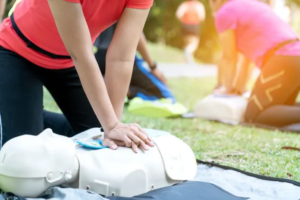
Learning first aid skills is not only a life skill, but it also helps to build community resilience. The more people in a community who are able to provide first aid, the safer that community will be. In addition, first aid skills can come in handy in many different situations. You never know when you might need to use them, and your life might one day depend on it. Knowing how to administer first aid can be invaluable in an emergency situation.
Whether you are a professional first responder or simply someone who wants to be prepared for anything, learning basic first aid can help you to deal with minor injuries and also give you the confidence to deal with more serious situations. Together, we can build a safer and more resilient community.
2. Fire making & safety skills.
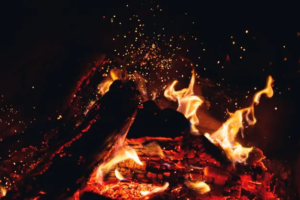
Starting a fire is a skill that can come in handy in a variety of situations. Whether you’re trying to stay warm on a cold night or cook a meal in the wilderness, fire can be a useful tool. However, fire can also be dangerous if not managed correctly. That’s why it’s important to know how to start a fire safely and how to put it out when you’re finished.
One way to start a fire is with a fire starter. This is a device that helps to get the fire going by providing a spark or heat source. You can also use a fire rod to create a spark, or matches or a lighter to create heat. Once you’ve got the fire going, you’ll need to add fuel to keep it going. This can be anything from wood to paper to fabric. And finally, when you’re ready to put the fire out, you’ll need water. dousing the fire with water will extinguish the flames and help prevent any further damage.
With these tips in mind, you’ll be able to start and stop a fire safely, making sure that you only enjoy the benefits of this powerful element.
3. Shelter building skills.
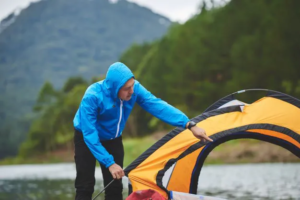
In an emergency situation, having the skills to build a shelter could mean the difference between life and death. A shelter provides protection from the elements and can help to regulate body temperature, both of which are crucial for surviving in a hostile environment. There are many different types of shelter that can be built, ranging from simple tarpaulin shelters to more complex Snow caves. The best shelter is one that is tailored to the specific environment in which it will be used. For example, a tent may provide adequate shelter in warm weather but would be unsuitable in a cold climate. It is therefore important to familiarize yourself with the various shelter-building techniques before heading into any potentially dangerous situation. With the right skills and knowledge, you can increase your chances of survival in an emergency situation.
4. Water purification skills.
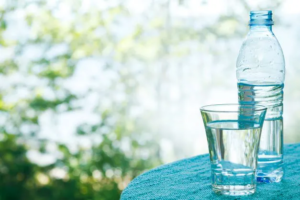
Water is an essential component of survival, and it’s important to know how to purify water in an emergency situation. There are a variety of water purification methods available, and it’s important to familiarize yourself with the equipment and procedures before you need to use them. water filters are a common water purification method, and they come in a variety of sizes and styles. Some water filters require electricity to operate, while others can be used without power. It’s important to read the instructions for your water filter and practice using it ahead of time so that you’ll know how to use it in an emergency. Familiarizing yourself with water purification methods and equipment ahead of time can help you ensure that you have the skills and knowledge necessary to purify water in an emergency situation.
5.Stay informed
Inform yourself on official websites, local government websites, subscribe to early warning systems, listen to the radio and keep up with the latest news and weather reports so that you know what to expect in the event of an emergency.
I hope you found this post helpful. It’s important that we all take the time to prepare for emergencies, both big and small. Follow my blog for more information on how to be ready for any emergency. And don’t forget – Being prepared can help keep you and your loved ones safe in the event of an emergency. So take the time to develop a plan and assemble an emergency kit today.
Conclusion
Disaster preparedness is key to increasing social resilience and, as we’ve seen, there are many things you can do to help increase your preparedness. From assembling an emergency survival kit to learning basic first aid skills, these steps will help improve the safety of both you and your community in times of need. If you’re looking for more information on disaster preparedness or want to start helping your community become more resilient, subscribe to my blog and share the word with your friends and family. I’ll be covering all the basics in the coming weeks so that you can be ready for whatever comes our way.
